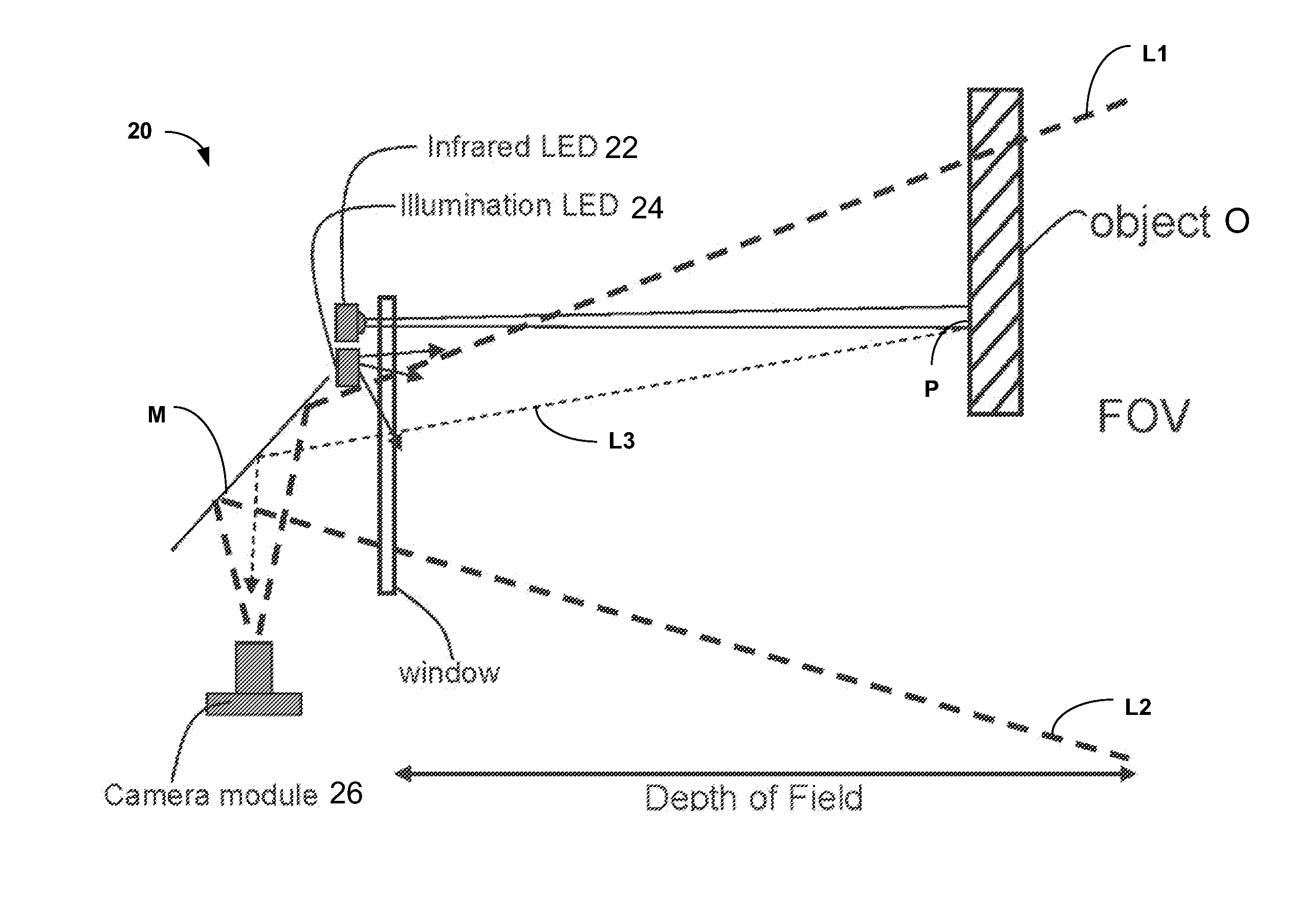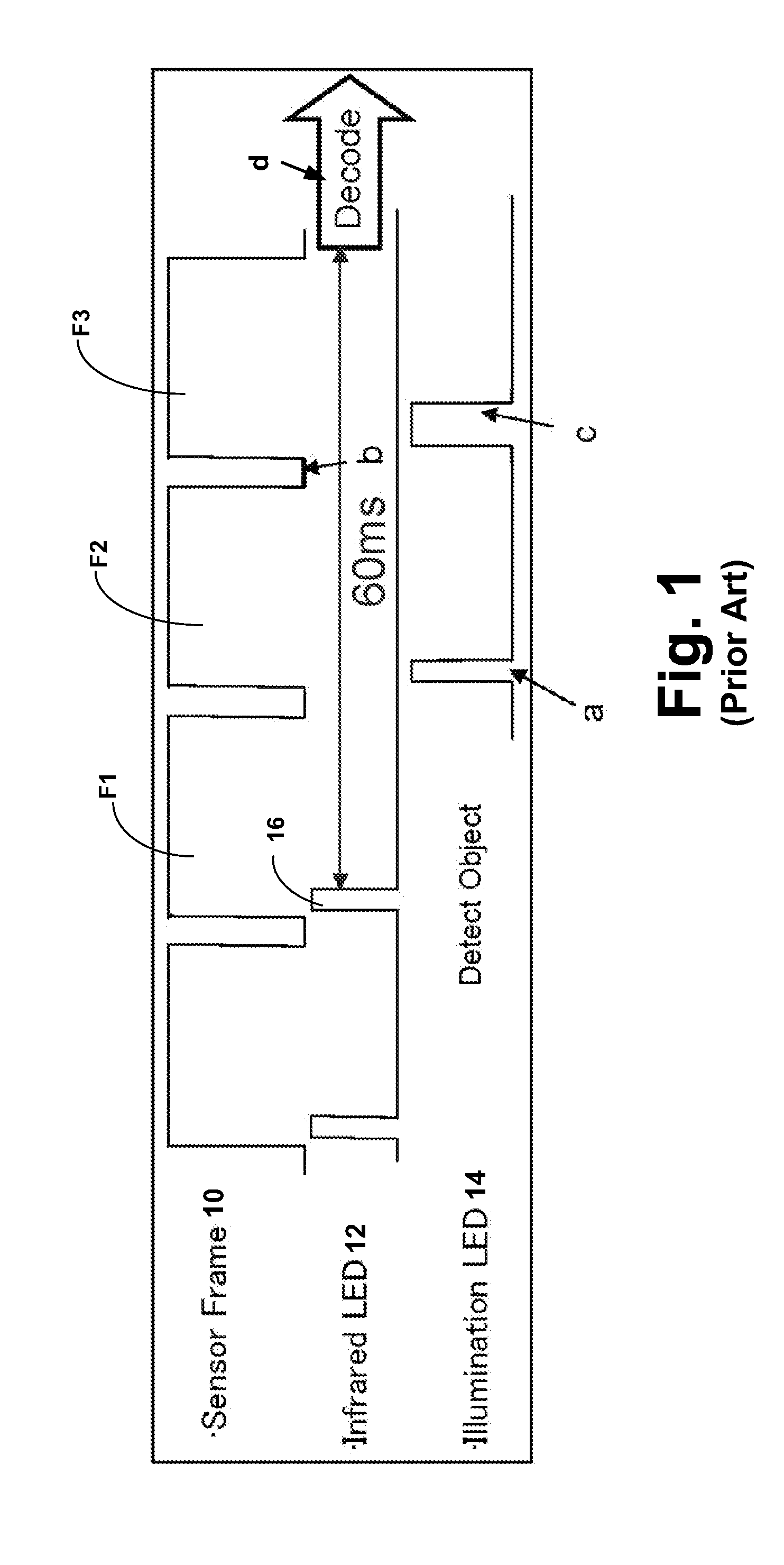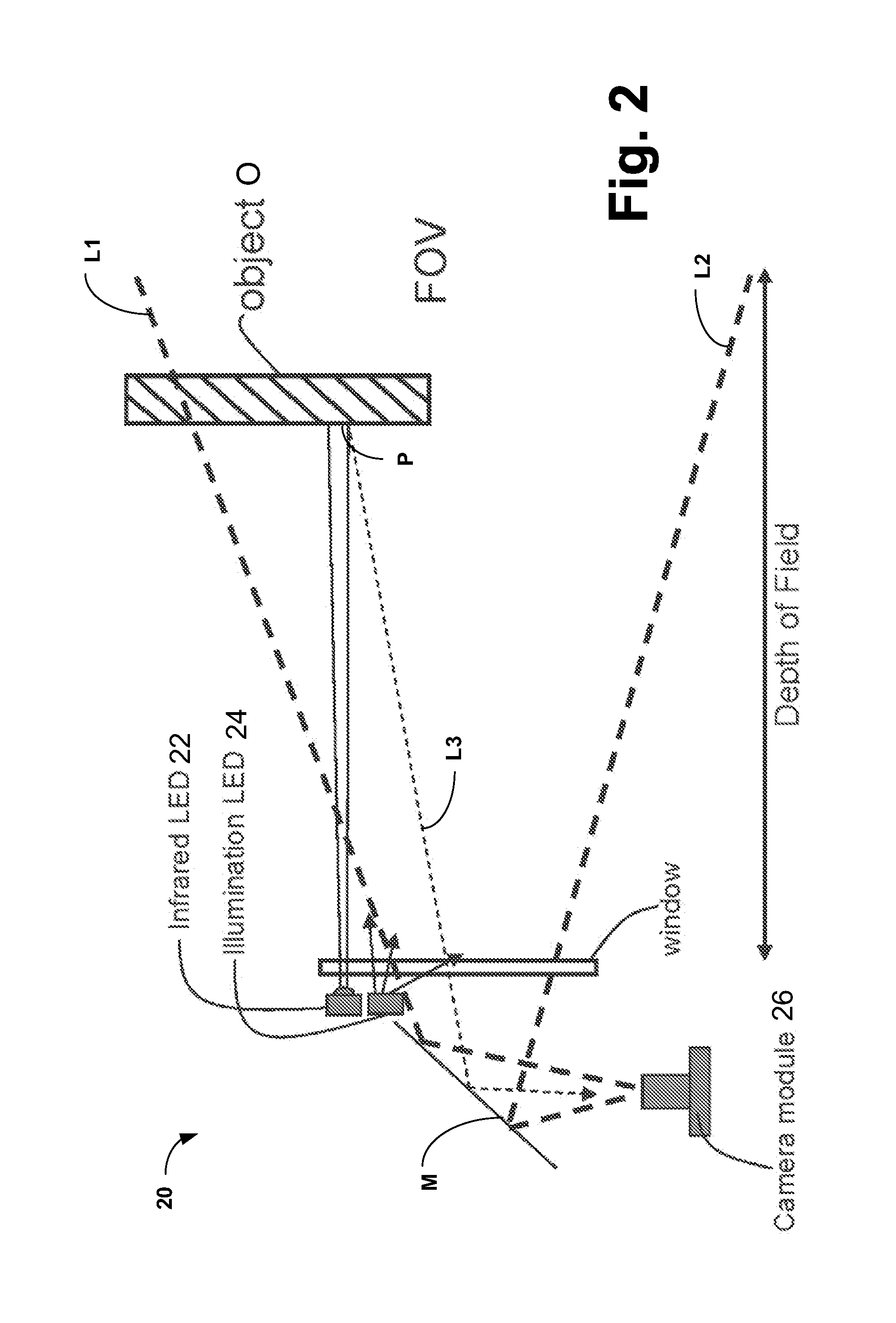Optical Code Detection With Image Exposure Control
a technology of image exposure control and optical code detection, applied in the field of optical code detection and reading systems, can solve the problems of far more demanding application of optical code reading, and achieve the effect of improving reliability and speed of decoding
- Summary
- Abstract
- Description
- Claims
- Application Information
AI Technical Summary
Benefits of technology
Problems solved by technology
Method used
Image
Examples
Embodiment Construction
[0018]Turning now to the drawings, FIG. 2 is a schematic representation of an optical imaging device system 20 embodying the present invention. FIG. 3 is a timing chart useful in describing the operation of system 20 of FIG. 2, and FIG. 4 is a flow chart, also useful in describing the operation.
[0019]As may be seen in FIG. 2, system 20 includes an infrared light emitting diode (LED 22), which emits infrared radiation and an illumination LED 24, which emits visible light. Radiation from LEDs 22 and 24 is directed at a face of an object O, which bears an optical code, preferably in an area above a point P where the infrared radiation impinges. A camera module 26 having a field of view FOV defined by the lines L1, L2 monitors object O through a mirror M. Line L3 represents an image of point P reflected from object O to camera module 26.
[0020]In operation, as represented by block 100 in the flow chart of FIG. 4, the infrared LED 22 is pulsed during a sensor frame F2 and, when the image ...
PUM
 Login to View More
Login to View More Abstract
Description
Claims
Application Information
 Login to View More
Login to View More - R&D
- Intellectual Property
- Life Sciences
- Materials
- Tech Scout
- Unparalleled Data Quality
- Higher Quality Content
- 60% Fewer Hallucinations
Browse by: Latest US Patents, China's latest patents, Technical Efficacy Thesaurus, Application Domain, Technology Topic, Popular Technical Reports.
© 2025 PatSnap. All rights reserved.Legal|Privacy policy|Modern Slavery Act Transparency Statement|Sitemap|About US| Contact US: help@patsnap.com



